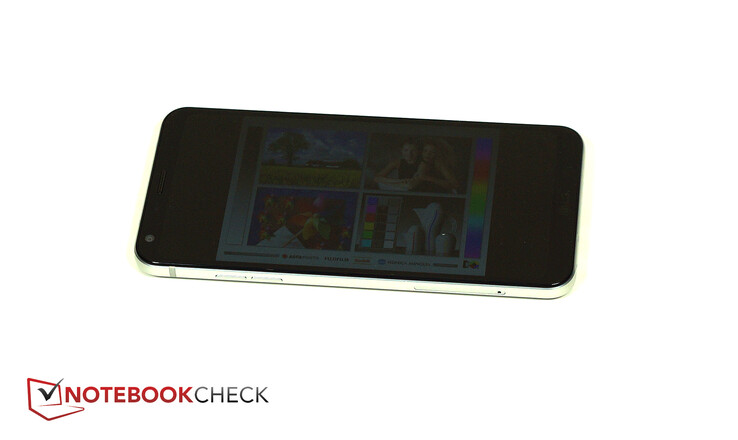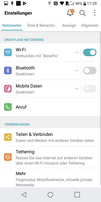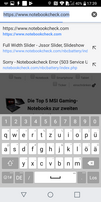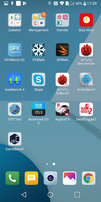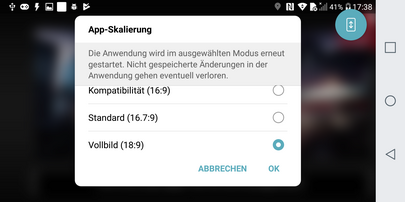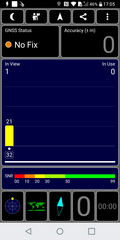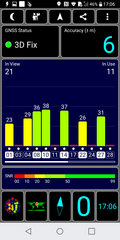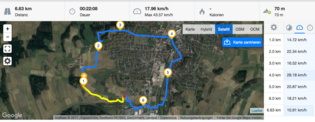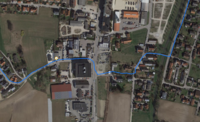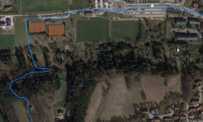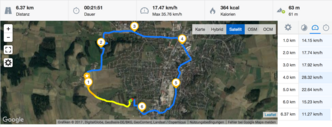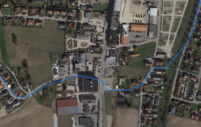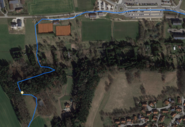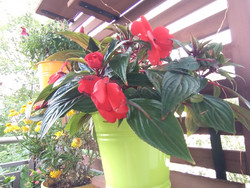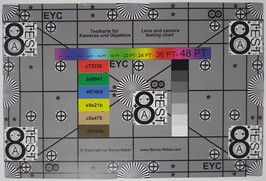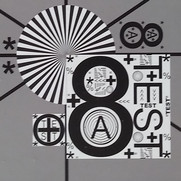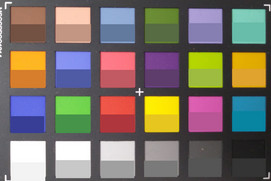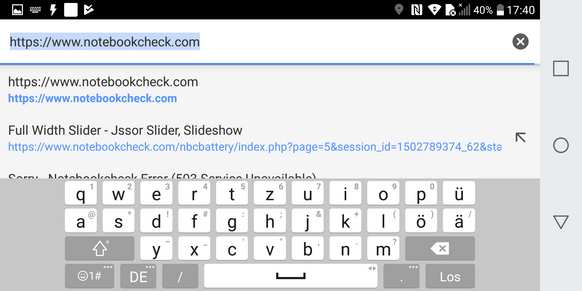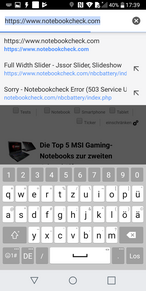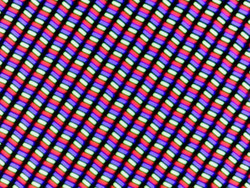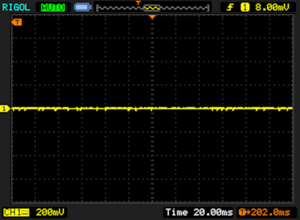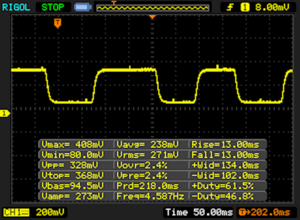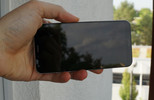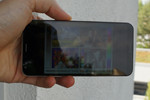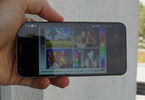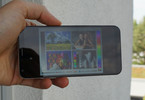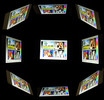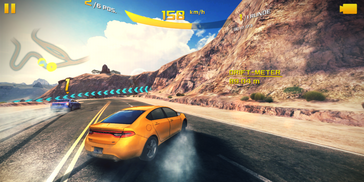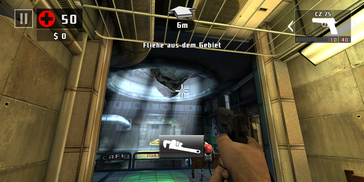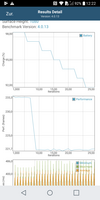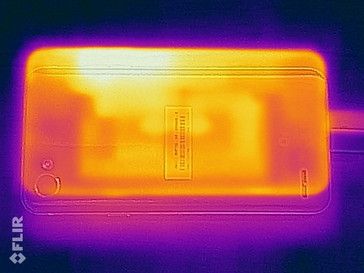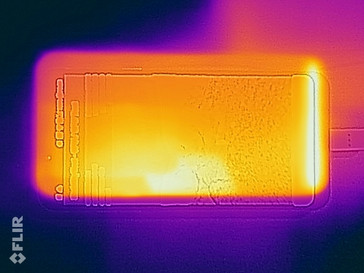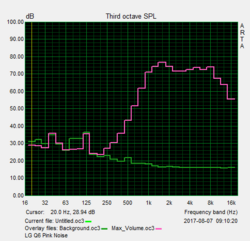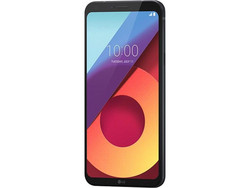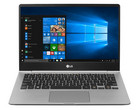LG Q6 Smartphone Review
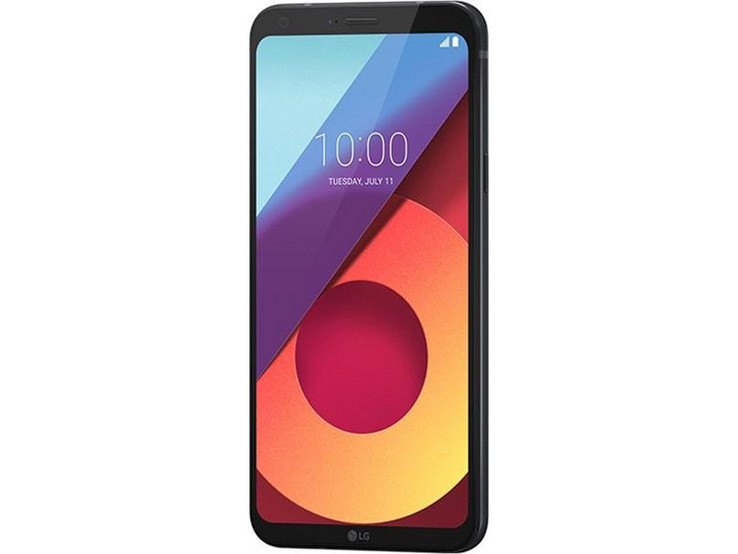
For the original German review, see here.
After the modularity experiments with the LG G5, the manufacturer returned to a classical smartphone for a flagship with the G6. This was a step in the right direction, as we rated it a heavenly 90% in our review. Consequently, LG used this as a blueprint for a less equipped model for the mid-range segment. The new LG Q6 is a spitting, lower performance version of its older brother, the LG G6. At the time of writing this review, there is no word on pricing for the Q6 for the US. In Europe, you can get your hands on one less than 349 Euros (~ $410). There will be two Q6 models: the Q6a (alpha) and the Q6 plus with a little more storage.
The mid-range price segment of the smartphone market is already very saturated with attractive devices, e.g. the Lenovo P2 with its giant battery, the Asus Zenfone 3, or the Samsung Galaxy A5. We will be using these three devices for direct comparison in our review with the Q6 and we will outline differences to the LG G6.
Case
The LG Q6 is smaller than the LG G6 with its 5.7-inch screen. The overall dimensions of the phone are smaller, except for the thicker height in the Q6. Thanks to the slim bezels on the left and right sides of the device, its dimensions are very compact for a smartphone with a 5.5-inch screen. We have the silver and blue model in our hands, but the Q6 is available in black and gold, as well. The back of the phone is made of plastic and its frame is metal. The compact build is very rigid. Pressure to the front or back of the phone does not show on the screen and it does not bend, either.
The smartphone has a well-balanced feel in the hand and is of very good build quality. An attractive aspect is the rounded corners of the display.
Like most new phones, the LG Q6 does not have a removable battery.
Equipment
The LG Q6 offers 32 GB of mass storage and 3 GB of RAM. The standard LG G6 model has the same storage capacity but 1 GB more RAM. As mentioned before, LG plans on offering two different Q6 models with different mass storage and RAM capacities. The Samsung Galaxy A5 comes with the same storage equipment; all other competitors offer more storage for the same or even lower price tag.
There is a dual-SIM iteration of the LG Q6, but we tested the single-SIM one. Replacing the SIM often comes with a forced reboot of the phone. By using a microSD card, users can boost their mass storage by up to 256 GB, although it cannot be formatted as internal storage. It is still possible to move apps onto the external storage.
Software
LG preinstalled Android 7.1.1 OS. During our test, we received a security patch from 1 July 2017, which is still recent as of writing this review in mid-August 2017. LG promises the update to Android O.
The manufacturer added some changes to the standard Android UI, e.g. the settings are grouped. Users can further choose whether they want all apps displayed on the home screen or in an app drawer. The lock screen offers many customizing options. Most of these changes are only on a visual level and Android veterans will not have a hard time handling the device.
Fortunately, LG did not preinstall apps for advertising purposes but lots of LG-specific bloatware some users might find helpful, others not so much. The RemoteCall app allows LG customer service to make remote repairs with the user´s permission. There is SmartDoctor, which aims to resolve system issues, an e-mail app, and a task planner app. These are just a few examples of apps for which free alternatives can be found preinstalled as standard Android apps or on the Google Play Store anyways.
Communication and GPS
The Wi-Fi module of the LG Q6 is not capable of the fast 5 GHz communication and instead relies on 2.4 GHz with the 802.11 b/g/n standards. The LG Q6 is faster than the Asus Zenfone 3 in this aspect, but falls behind every other competitor in this category, which does not come as a surprise as the Lenovo P2 and the Galaxy A5 both offer speedy 802.11ac Wi-Fi capability. In our field test, we put the smartphone in close proximity to our reference router and observe hesitant browsing speeds. The Wi-Fi connection strength was halved when the distance was increased to 10 meters (~ 33 feet) and three walls were between the phone and the router.
The LG Q6 only supports 11 LTE bands, which is bad compared to the G6, but very good in its price segment. For Europe, users should not be concerned about reception. Compared to the LG G6, speeds were cut from LTE Cat. 11 to LTE Cat. 6 in the Q6. This is still more than enough for current European networks, but the LG G6 is more future-proof. Inside an urban apartment in a German city, we often got 3 out of 4 reception bars (Vodafone carrier).
| Networking | |
| iperf3 transmit AX12 | |
| LG G6 | |
| Lenovo P2 | |
| Samsung Galaxy A5 2017 | |
| LG Q6 | |
| Asus Zenfone 3 ZE552KL | |
| iperf3 receive AX12 | |
| LG G6 | |
| Samsung Galaxy A5 2017 | |
| Lenovo P2 | |
| LG Q6 | |
| Asus Zenfone 3 ZE552KL | |
The GPS module cannot pick up the satellites indoors. Outdoors it takes rather long to pick to the signal, but the accuracy of 6 meters (~ 20 feet) is very good.
We took the LG Q6 and our professional Garmin Edge 500 reference navigation system for a 6.6 km (~ 4 miles) long bicycle ride where we measured a huge difference of 250 meters (~820 feet) on the Q6. Looking at the GPS recording in more detail, we can see that the LG Q6 picks up significantly less location points than the professional navigational system. Hence, it sometimes connects two distant locations by straight lines, which reduces its accuracy. Despite this, GPS on the LG Q6 is better than expected and it can be used as a navigation system on occasion.
Telephony and call quality
The dialer app has not been changed much by LG. It displays dials and most recent calls. The tabs on the top can be used to change to a complete call list or all contacts.
Sound quality is very good. The earpiece can get very loud, if desired, and the microphone transmits voices clearly and comprehensibly. The microphone echoes on hands-free mode and seems further away than on other smartphones. The loudspeaker is loud and clear.
Cameras
There is no dual-camera setup as in the LG G6 and although several recent mid-range smartphones feature a 16 MP camera, the LG Q6 relies on a standard 13 MP shooter with good sharpness in the center and significant loss of it towards the outside of the image. Many recent smartphone cameras deliver better details, although the LG Q6´s color reproduction and overall performance is respectable. To exploit all the pixels of the sensor, users need to switch to a 4:3 image ratio, since the popular 18:9 images are simply cut off 4:3-images that look good on screen but become problematic when printed out.
Videos can be recorded at 1080p with 30 frames per second. Quality, color reproduction, and ambient exposure adjustments are good.
Both, the LG G6 and Q6 feature a 5 MP front-facing camera with wide-angle capability if needed. It has issues with taking pictures against the light. Edges are quickly pixelated, color reproduction is unimpressive and sharpness is lacking. There are mid-range smartphones with better front-facing cameras out there.
Our laboratory tests in standardized lighting conditions conclude that the front-facing camera has pale color reproduction and bad sharpness performance in the center of the image. The images get sharper towards the outsides of the frame.
Accessories and warranty
A small power adapter, a USB cable, a SIM card tool, and an in-ear headset come with the smartphone. LG does not offer any other specific accessories for the Q6.
Our German test device comes with a 2-year guarantee.
Input devices and handling
LG´s keyboard app is convenient to use, but its impression suffers a little from the double occupied keys.
Even in the corners, touchscreen sensitivity is good. Users can unlock the LG Q6 via face-recognition instead of fingerprint-recognition. This methods works quickly and well but we would not recommend it because it is easy to trick simply by holding a photo displayed on another smartphone in front of the camera.
Double-tap-to-wake and using the volume up and down buttons to activate the camera or the note pad, respectively, are handy features to have in the LG Q6.
Display
The 18:9 screen ratio with its 2160x1080 pixels is very unusual but is equivalent to 1920x1080 pixels in a regular 16:9 screen. The LG Q6 uses IPS technology and emits light with up to 498 cd/m², which is a little dimmer than the higher resolution screen of the LG G6. The screen has an illumination of 88%, which is average but good enough to make the same color appear the same over the entire length.
| |||||||||||||||||||||||||
Brightness Distribution: 88 %
Center on Battery: 523 cd/m²
Contrast: 2179:1 (Black: 0.24 cd/m²)
ΔE ColorChecker Calman: 6.4 | ∀{0.5-29.43 Ø4.78}
ΔE Greyscale Calman: 7.4 | ∀{0.09-98 Ø5}
98.1% sRGB (Calman 2D)
Gamma: 2.4
CCT: 8641 K
| LG Q6 IPS, 2160x1080, 5.5" | LG G6 IPS LCD, 2880x1440, 5.7" | Lenovo P2 AMOLED, 1920x1080, 5.5" | Samsung Galaxy A5 2017 Super AMOLED, 1920x1080, 5.2" | Asus Zenfone 3 ZE552KL IPS, 1920x1080, 5.5" | |
|---|---|---|---|---|---|
| Screen | 19% | 27% | 42% | -14% | |
| Brightness middle (cd/m²) | 523 | 646 24% | 479 -8% | 539 3% | 658 26% |
| Brightness (cd/m²) | 498 | 611 23% | 477 -4% | 542 9% | 633 27% |
| Brightness Distribution (%) | 88 | 89 1% | 91 3% | 93 6% | 93 6% |
| Black Level * (cd/m²) | 0.24 | 0.23 4% | 0.66 -175% | ||
| Contrast (:1) | 2179 | 2809 29% | 997 -54% | ||
| Colorchecker dE 2000 * | 6.4 | 4.5 30% | 2.4 62% | 1.6 75% | 4.9 23% |
| Colorchecker dE 2000 max. * | 11 | 8.3 25% | 5.6 49% | 2.6 76% | 9.1 17% |
| Greyscale dE 2000 * | 7.4 | 6 19% | 2.8 62% | 1.5 80% | 5.8 22% |
| Gamma | 2.4 92% | 2.27 97% | 2.28 96% | 2.28 96% | 2.26 97% |
| CCT | 8641 75% | 7996 81% | 6702 97% | 6422 101% | 7840 83% |
| Color Space (Percent of AdobeRGB 1998) (%) | 67.74 | ||||
| Color Space (Percent of sRGB) (%) | 99.05 |
* ... smaller is better
Screen Flickering / PWM (Pulse-Width Modulation)
| Screen flickering / PWM not detected | |||
In comparison: 53 % of all tested devices do not use PWM to dim the display. If PWM was detected, an average of 8108 (minimum: 5 - maximum: 343500) Hz was measured. | |||
Nowadays, some mid-range phones are equipped with AMOLED screens, which offer great contrast because pure blacks are simply displayed by switched-off pixels and because of the absence of a backlight, no light passes through. LG furnishes the LG Q6 with an IPS screen with a surprisingly good black value of 0.24 cd/m² (contrast ratio 2,179:1) leading to very deep blacks.
We tested the color accuracy of the display with a spectral photometer and the CalMAN software and measured an apparent blue hue. Fortunately, it is possible to adjust the white balance in the settings to remove this blue hue. In theory, users could even set the display to black and white. In standard mode, the color deviates a lot from the reference color space. Red tones appear too dark.
Display Response Times
| ↔ Response Time Black to White | ||
|---|---|---|
| 26 ms ... rise ↗ and fall ↘ combined | ↗ 13 ms rise | |
| ↘ 13 ms fall | ||
| The screen shows relatively slow response rates in our tests and may be too slow for gamers. In comparison, all tested devices range from 0.1 (minimum) to 240 (maximum) ms. » 61 % of all devices are better. This means that the measured response time is worse than the average of all tested devices (20.2 ms). | ||
| ↔ Response Time 50% Grey to 80% Grey | ||
| 38 ms ... rise ↗ and fall ↘ combined | ↗ 19 ms rise | |
| ↘ 19 ms fall | ||
| The screen shows slow response rates in our tests and will be unsatisfactory for gamers. In comparison, all tested devices range from 0.165 (minimum) to 636 (maximum) ms. » 54 % of all devices are better. This means that the measured response time is worse than the average of all tested devices (31.6 ms). | ||
The maximum brightness of the display is very high, hence it has good outdoor visibility. In direct sunlight, however, the usability suffers from the LG Q6´s reflective front. The light sensor reacts well to ambient light changes and is able to push the screen brightness all the way up to the maximum.
Viewing angles are very good and we could not observe color or brightness changes on the sides.
Performance
We are surprised by the utilized SoC. For the price tag, we would have expected to find a 600-series Snapdragon SoC. Instead, LG furnishes the smartphone with an octa-core Snapdragon 435 capable of clock speeds of up to 1.4 GHz. LG cannot even be awarded with a certificate of participation in this price segment. The LG Q6 gets within reach of the Samsung Galaxy A5, but all other competitors are not even visible anymore from that far behind. The LG Q6 comes in with one third of the processing performance as the G6. This may not be apparent while navigating smoothly through the menus; more complex apps or photo retouches will take their fine time though. The SoC comes with an Adreno 505 graphics solution clocking at 450 MHz. All current graphic APIs are supported, but the performance is still significantly behind its competitors.
| AnTuTu v6 - Total Score (sort by value) | |
| LG Q6 | |
| LG G6 | |
| Lenovo P2 | |
| Samsung Galaxy A5 2017 | |
| Asus Zenfone 3 ZE552KL | |
| PCMark for Android | |
| Work performance score (sort by value) | |
| LG Q6 | |
| LG G6 | |
| Lenovo P2 | |
| Samsung Galaxy A5 2017 | |
| Asus Zenfone 3 ZE552KL | |
| Work 2.0 performance score (sort by value) | |
| LG Q6 | |
| LG G6 | |
| Lenovo P2 | |
| Samsung Galaxy A5 2017 | |
| Geekbench 4.4 | |
| 64 Bit Single-Core Score (sort by value) | |
| LG Q6 | |
| LG G6 | |
| Samsung Galaxy A5 2017 | |
| 64 Bit Multi-Core Score (sort by value) | |
| LG Q6 | |
| LG G6 | |
| Samsung Galaxy A5 2017 | |
| Compute RenderScript Score (sort by value) | |
| LG Q6 | |
| LG G6 | |
| Samsung Galaxy A5 2017 | |
| GFXBench (DX / GLBenchmark) 2.7 | |
| T-Rex Onscreen (sort by value) | |
| LG Q6 | |
| LG G6 | |
| Lenovo P2 | |
| Samsung Galaxy A5 2017 | |
| Asus Zenfone 3 ZE552KL | |
| 1920x1080 T-Rex Offscreen (sort by value) | |
| LG Q6 | |
| LG G6 | |
| Lenovo P2 | |
| Samsung Galaxy A5 2017 | |
| Asus Zenfone 3 ZE552KL | |
| GFXBench 3.0 | |
| on screen Manhattan Onscreen OGL (sort by value) | |
| LG Q6 | |
| LG G6 | |
| Lenovo P2 | |
| Samsung Galaxy A5 2017 | |
| Asus Zenfone 3 ZE552KL | |
| 1920x1080 1080p Manhattan Offscreen (sort by value) | |
| LG Q6 | |
| LG G6 | |
| Lenovo P2 | |
| Samsung Galaxy A5 2017 | |
| Asus Zenfone 3 ZE552KL | |
| GFXBench 3.1 | |
| on screen Manhattan ES 3.1 Onscreen (sort by value) | |
| LG Q6 | |
| LG G6 | |
| Lenovo P2 | |
| Samsung Galaxy A5 2017 | |
| Asus Zenfone 3 ZE552KL | |
| 1920x1080 Manhattan ES 3.1 Offscreen (sort by value) | |
| LG Q6 | |
| LG G6 | |
| Lenovo P2 | |
| Samsung Galaxy A5 2017 | |
| Asus Zenfone 3 ZE552KL | |
| GFXBench | |
| on screen Car Chase Onscreen (sort by value) | |
| LG Q6 | |
| LG G6 | |
| Lenovo P2 | |
| Samsung Galaxy A5 2017 | |
| Asus Zenfone 3 ZE552KL | |
| 1920x1080 Car Chase Offscreen (sort by value) | |
| LG Q6 | |
| LG G6 | |
| Lenovo P2 | |
| Samsung Galaxy A5 2017 | |
| Asus Zenfone 3 ZE552KL | |
Web browsing benchmarks leave the LG Q6 exhausted, far behind the competition. The demanding HTML5 game (letsplay.ouigo.com) stutters and commands are enforced with apparent delays.
| JetStream 1.1 - Total Score | |
| LG G6 (Chrome 57) | |
| Samsung Galaxy A5 2017 (Samsung Browser (Chrome 44)) | |
| Asus Zenfone 3 ZE552KL (Chrome 53.0.2785.124) | |
| Lenovo P2 (Chrome 56) | |
| LG Q6 (Chrome 59) | |
| Octane V2 - Total Score | |
| LG G6 (Chrome 57) | |
| Samsung Galaxy A5 2017 (Samsung Browser (Chrome 44)) | |
| Asus Zenfone 3 ZE552KL (Chrome 53.0.2785.124) | |
| Lenovo P2 (Chrome 56) | |
| LG Q6 (Chrome 59) | |
| Mozilla Kraken 1.1 - Total | |
| LG Q6 (Chrome 59) | |
| Lenovo P2 (Chrome 56) | |
| Asus Zenfone 3 ZE552KL (Chrome 53.0.2785.124) | |
| Samsung Galaxy A5 2017 (Samsung Browser (Chrome 44)) | |
| LG G6 (Chrome 57) | |
| WebXPRT 2015 - Overall | |
| LG G6 (Chrome 57) | |
| Samsung Galaxy A5 2017 (Samsung Browser (Chrome 44)) | |
| Asus Zenfone 3 ZE552KL (Chrome 53.0.2785.124) | |
| Lenovo P2 | |
| LG Q6 (Chrome 59) | |
* ... smaller is better
Benchmarks on the external storage speeds seem to make the LG Q6 look quite good. In fact, it even beats its high-end sibling, the LG G6, with our Toshiba reference microSD card. Admittedly, this current benchmark used the newer Exceria Pro M501, while our past benchmarks were done on its predecessor.
Benchmarks on the internal storage position the LG Q6 well ahead the Samsung Galaxy A5.
| LG Q6 | LG G6 | Lenovo P2 | Samsung Galaxy A5 2017 | Asus Zenfone 3 ZE552KL | |
|---|---|---|---|---|---|
| AndroBench 3-5 | 31% | 50% | -21% | 6% | |
| Sequential Read 256KB (MB/s) | 263.1 | 428.7 63% | 270.1 3% | 182 -31% | 282 7% |
| Sequential Write 256KB (MB/s) | 133.5 | 122.8 -8% | 76.7 -43% | 77.1 -42% | 188 41% |
| Random Read 4KB (MB/s) | 54.3 | 95.2 75% | 38.2 -30% | 22.41 -59% | 74 36% |
| Random Write 4KB (MB/s) | 9.2 | 16.58 80% | 44.4 383% | 12.13 32% | 7.4 -20% |
| Sequential Read 256KB SDCard (MB/s) | 84.8 | 77.6 ? -8% | 79.3 ? -6% | 73.7 ? -13% | 79.2 ? -7% |
| Sequential Write 256KB SDCard (MB/s) | 62.6 | 53.3 ? -15% | 59.4 ? -5% | 56 ? -11% | 50.1 ? -20% |
Games
Thanks to the GPU´s support for modern APIs, users can play many modern games. For demanding games, either the graphic settings need to be lowered or players have to live with less-than-optimal frame rates and stuttering games. Asphalt 8 can be displayed at 30 fps only on lowest settings. Dead Trigger 2 runs smoothly. Less demanding games such as Angry Birds obviously does not pose any issues.
The smartphone controls, i.e. position sensor and touchscreen, are responsive enough for gaming.
| Asphalt 8: Airborne | |||
| Settings | Value | ||
| high | 25 fps | ||
| very low | 30 fps | ||
| Dead Trigger 2 | |||
| Settings | Value | ||
| high | 30 fps | ||
Emissions
Temperature
The LG Q6 reaches acceptable maximum temperatures of up to 34.6 °C (~ 95 °F) on the outside. The temperature differences between idling and operation under load are barely perceptible. Under load, the performance decreases 5% after some time. This leaves us optimistic not to encounter any major performance issues under long loads.
(+) The maximum temperature on the upper side is 34.6 °C / 94 F, compared to the average of 35.2 °C / 95 F, ranging from 21.9 to 247 °C for the class Smartphone.
(+) The bottom heats up to a maximum of 34 °C / 93 F, compared to the average of 34 °C / 93 F
(+) In idle usage, the average temperature for the upper side is 31.4 °C / 89 F, compared to the device average of 32.9 °C / 91 F.
Speakers
The speakers are on the back of the device, but fortunately, the sound does not get too attenuated when placed on a table. It can get quite loud, but basses are not present and deep mids are barely audible, giving the sound a very shallow feel. Generally, everything other than a short taste of a song or a YouTube video ask too much of the speakers and the use of the included pair of earphones that can be plugged into the 3.5 mm audio jack or a Bluetooth speaker are recommended for comfortable audio quality.
LG Q6 audio analysis
(+) | speakers can play relatively loud (84.5 dB)
Bass 100 - 315 Hz
(-) | nearly no bass - on average 36% lower than median
(±) | linearity of bass is average (10% delta to prev. frequency)
Mids 400 - 2000 Hz
(±) | reduced mids - on average 13% lower than median
(±) | linearity of mids is average (12.8% delta to prev. frequency)
Highs 2 - 16 kHz
(±) | higher highs - on average 7.9% higher than median
(+) | highs are linear (4.4% delta to prev. frequency)
Overall 100 - 16.000 Hz
(-) | overall sound is not linear (35.2% difference to median)
Compared to same class
» 85% of all tested devices in this class were better, 1% similar, 14% worse
» The best had a delta of 11%, average was 35%, worst was 134%
Compared to all devices tested
» 93% of all tested devices were better, 1% similar, 6% worse
» The best had a delta of 4%, average was 24%, worst was 134%
Samsung Galaxy A5 2017 audio analysis
(+) | speakers can play relatively loud (83 dB)
Bass 100 - 315 Hz
(-) | nearly no bass - on average 15.5% lower than median
(±) | linearity of bass is average (9.1% delta to prev. frequency)
Mids 400 - 2000 Hz
(±) | higher mids - on average 9.4% higher than median
(±) | linearity of mids is average (7.6% delta to prev. frequency)
Highs 2 - 16 kHz
(±) | higher highs - on average 5% higher than median
(±) | linearity of highs is average (7.6% delta to prev. frequency)
Overall 100 - 16.000 Hz
(±) | linearity of overall sound is average (23.6% difference to median)
Compared to same class
» 53% of all tested devices in this class were better, 8% similar, 39% worse
» The best had a delta of 11%, average was 35%, worst was 134%
Compared to all devices tested
» 70% of all tested devices were better, 6% similar, 24% worse
» The best had a delta of 4%, average was 24%, worst was 134%
Frequency diagram in comparison (Toggle check boxes on/off!)
Battery runtime
Energy consumption
The LG Q6 consumes quite a lot of energy when idling despite its low general performance. Under load it is more efficient than some competitors. Generally, it is not a very efficient smartphone and reaches average values. In fact, this is very disappointing to see as it is a very low performing device. This is probably because of the aged SoC production process that leaves it much thirstier for energy than modern SoCs.
| Off / Standby | |
| Idle | |
| Load |
|
Key:
min: | |
| LG Q6 3000 mAh | LG G6 3300 mAh | Lenovo P2 5100 mAh | Samsung Galaxy A5 2017 3000 mAh | Asus Zenfone 3 ZE552KL 3000 mAh | |
|---|---|---|---|---|---|
| Power Consumption | -25% | 39% | 28% | -4% | |
| Idle Minimum * (Watt) | 0.92 | 0.62 33% | 0.54 41% | 0.64 30% | 0.83 10% |
| Idle Average * (Watt) | 2.19 | 1.43 35% | 1.01 54% | 1.36 38% | 2.11 4% |
| Idle Maximum * (Watt) | 2.24 | 1.48 34% | 1.03 54% | 1.4 37% | 2.12 5% |
| Load Average * (Watt) | 3.38 | 5.52 -63% | 1.78 47% | 2.53 25% | 3.41 -1% |
| Load Maximum * (Watt) | 4 | 10.47 -162% | 3.98 -0% | 3.63 9% | 5.46 -37% |
* ... smaller is better
Battery runtime
The battery of the LG Q6 has a capacity of 3000 mAh (10.5 Wh), which is 300 mAh smaller than the one in the LG G6. In combination with the average energy consumption values this makes for a phone with the shortest battery runtimes compared with its rivals. 8:22 hours in our Wi-Fi test are not bad, but the Lenovo P2 almost doubles that. At the end of a normal day, the LG Q6 requires a thorough rest where it takes up to 2:30 hours to fully charge due to the small power adapter. Many competitors offer fast charging capabilities, while the LG Q6, unfortunately, does not.
| LG Q6 3000 mAh | LG G6 3300 mAh | Lenovo P2 5100 mAh | Samsung Galaxy A5 2017 3000 mAh | Asus Zenfone 3 ZE552KL 3000 mAh | |
|---|---|---|---|---|---|
| Battery runtime | 23% | 101% | 72% | 38% | |
| Reader / Idle (h) | 22.8 | 29.8 31% | 47.4 108% | 40.3 77% | 25 10% |
| H.264 (h) | 10.4 | 13 25% | 20 92% | 16.4 58% | 15.1 45% |
| WiFi v1.3 (h) | 8.4 | 11.5 37% | 16.3 94% | 14.1 68% | 13.3 58% |
| Load (h) | 4.2 | 4.2 0% | 8.8 110% | 7.8 86% | 5.9 40% |
Pros
Cons
Verdict
LG trimmed the performance of the Q6 a little too much and the price tag a little too little. The LG Q6´s price tag competes with devices that have more performance and more battery life – two important factors to a potential customer. There are other areas, too, where the LG Q6 just cannot keep up: the speakers are below average, the Wi-Fi module is rather slow, and the equipment is just okay.
Then again, LG does implement some nice features: the very rigid and unique case with its unusual body ratio and small side bezels do make for a very attractive device. The OS is up-to-date and LG promises fast updates in the future. Call quality is okay, the main camera captures good images, and the case warms up only slightly under load.
LG made cuts in a lot of places. Especially, the LG Q6´s performance is too low for this price segment. The solid case, the slightly above average battery runtime, and the very good screen save the phone from drowning.
We advise potential customers to wait until LG adjusts the pricing down a little before purchasing. There are many better devices in its current price segment of around $400. If you fancy the slim design and are fine with the lower performance, you will be getting a solid companion for your daily life.
LG Q6
- 08/21/2017 v6 (old)
Florian Wimmer




